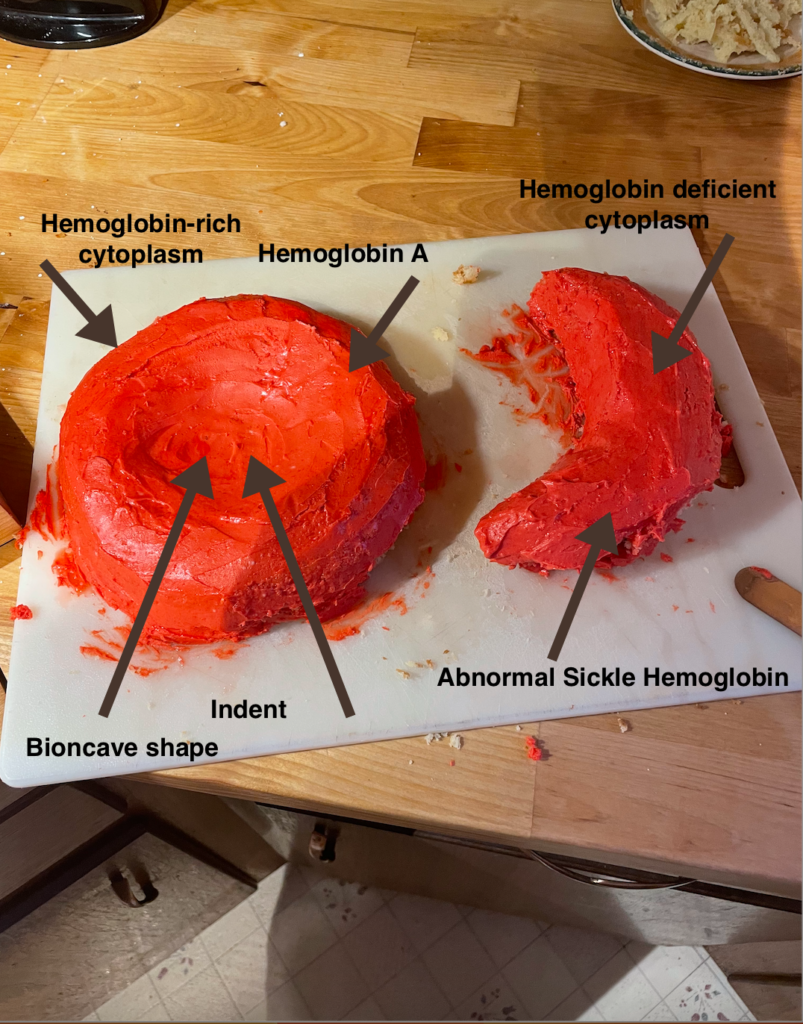I did my project on Sickle Cells. I used two cakes to demonstrate the difference between the two types of cells. The one on the left is a healthy RBC shown by it being a full circle and has a hemoglobin-rich cytoplasm and an indent in the middle. The one on the right is a sickle cell shown by the hemoglobin deficiency cytoplasm and the crescent shape.


This project explores the hindering effects of Sickle Cell Disease by comparing a healthy red blood cell (RBC) to a diseased sickle cell. In exploring this topic, this project covers the topics, “Describe disorders of blood and how they can be treated,” and “Describe the functions of RBCs and Hemoglobin.” This STEAM project uses cake decorating to show a side-by-side comparison of a healthy RBC and a diseased RBC. The healthy RBC cake showcases a hemoglobin-rich cytoplasm in a complete, indented circle. The diseased RBC cake demonstrates a hemoglobin-deficient cytoplasm in the shape of a crescent. Sickle Cell Disease occurs when an abnormal hemoglobin protein is present in RBCs. There are three main types of Sickle Cell Disease: HbSS, HbSC, and HbS beta thalassemia. Each type of Sickle Cell Disease is similar because they all occur due to being genetically inherited. The complications between all types of Sickle Cell Disease present alike one another. The abnormal hemoglobin present in Sickle Cell Diseased RBCs causes them to become hard and sticky. This results in sickle cells binding to other sickle cells to create their crescent shape. These fast-dying cells will travel throughout the body and often end up clogging smaller blood vessels to cause stroke and other complications. The body often suffers from anemia because these dead cells do not carry oxygen in their hemoglobin to the tissues. To treat Sickle Cell Disease, receiving blood transfusions, maintaining a specialized diet, and avoiding high altitudes are viable options. Overall, amazing project!